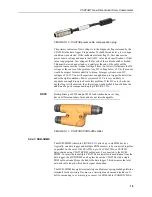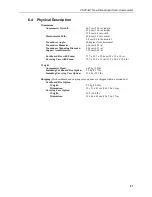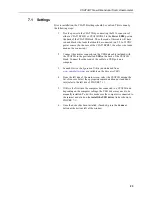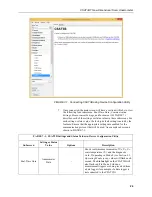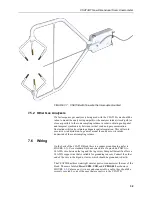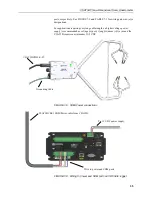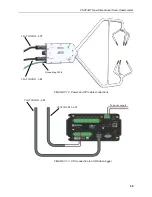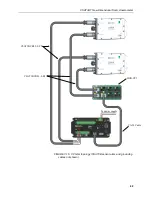
CSAT3B Three-Dimensional Sonic Anemometer
29
FIGURE 7-4. CSAT3B mounting
7.4 Leveling
Leveling the CSAT3B within a couple degrees is usually sufficient. The user
commonly applies coordinate rotations to time-series data to report the three-
dimensional wind in a coordinate system where the x- and y-axis lie along the
stream wise wind plane.
Over level terrain, adjust the anemometer head so that the bubble within the
level on top of the CSAT3B block is in the bullseye.
Over sloping terrain, adjust the anemometer head so that the horizontal surface
upon which the bubble level is mounted is parallel to the terrain. Firmly grasp
the sonic anemometer block, loosen the bolt underneath the block, and adjust
the head accordingly. Finally, tighten the bolt with a 9/16-in wrench.
If an application requires greater accuracy in inclination of the CSAT3B, or if
an application requires a measurement that shows if, and when, the inclination
of the CSAT3B changes over time (for example, a sagging crossarm or tower
tilt), an integrated inclinometer in the CSAT3B can give pitch and roll
measurements.
Pitch is the angle between the gravitationally horizontal plane and the CSAT3B
x-axis. A positive pitch angle corresponds to a clock-wise rotation about the y-
axis when looking down on the y-axis (see FIGURE
). In other words, a
positive pitch angle occurs when the transducer end of the CSAT3B is pointed
downwards, while a negative pitch angle occurs when CSAT3B is pointed
upwards.
Roll is the angle between the gravitationally horizontal plane and the CSAT3B
y-axis. A positive roll angle corresponds to a counter-clockwise rotation about
the x-axis when looking down the x-axis (see FIGURE
).
The inclinometer is sampled at a rate of 2 Hz and is not necessarily
synchronized with the wind and sonic temperature data outputs. For
CM20X Crossarm
CM250 Leveling Mount


